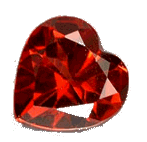
Stone of January
Garnet
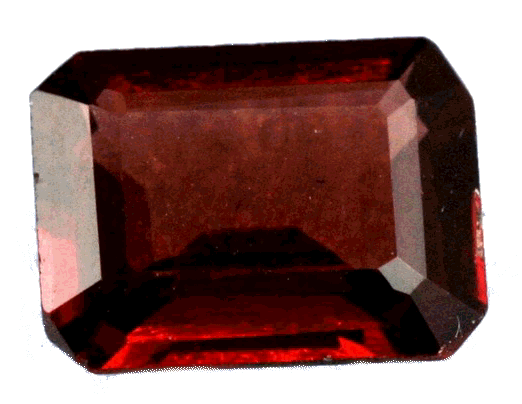
Pyrope
Garnets are a range of stones which are only formed under great heat and pressure, deep within the earth, they are brought to the surface by the moving of the earth’s plates and can sometimes be seen glittering in the new lava of volcanic eruptions.
They are a composition of over 20 minerals in a variety of colours from blackish-red - red - brown and green.
Legend has it that Noah hung a lamp of garnet in the ark, because of it's brilliant light dispersal properties. it was also one of the sacred stones in the breast plate of Aaron and the high priests.
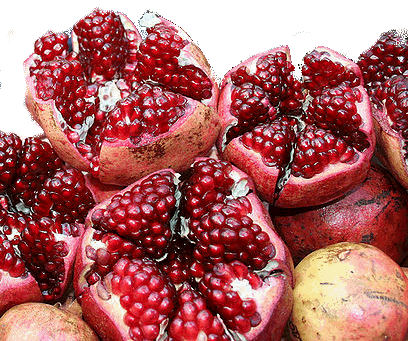
The garnet name is derived from pomegranate.
|Structure: Cubic|Composition: Iron aluminium silicate|Moh's Hardness: 7½|

Almandine Garnet
Probably named after Alabanda an ancient city in Anatolia, famous for gem-cutting. Almandine is rich in iron and is more common than pyrope or spessartine.
This type of garnet is brittle and faceted stones chip, therefore it is often cut in the step or ‘emerald’ cut to minimize the likelihood of chipping.
|Structure: Cubic|Composition: Magnesium aluminium silicate|Moh's Hardness: 7½|
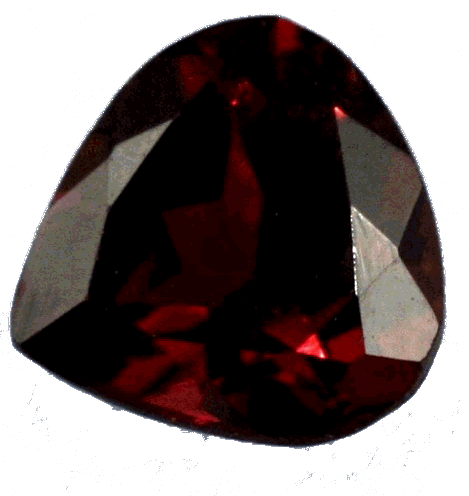
Pyrope
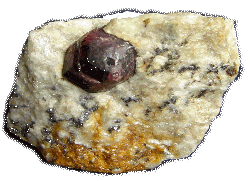
Pyrope crystal in host rock
Pyrope
Pyrope is a deep ruby red and was favoured as the most popular garnet during the 1700s and 1800s.
From the Greek Pyropos ‘fiery’, it is often found embedded in other rocks.
|Structure: Cubic|Composition: Iron aluminium silicate|Moh's Hardness: 7½|
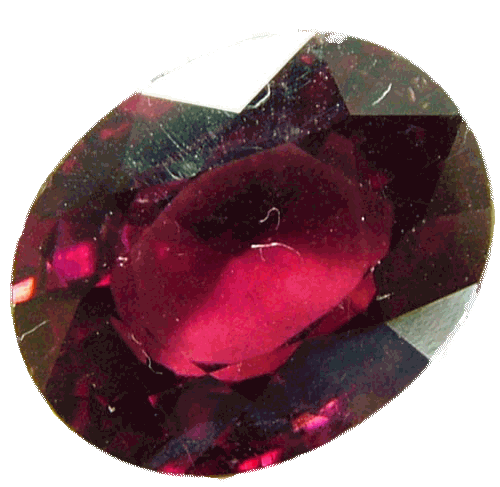
Rose coloured Rhodolite
Rhodolite
Rhodolite is almandine and pyrope intermingled. From the Greek ‘rhodo’ (rose) and ‘lithos’ (stone). This type of garnet has a pinkish tone.
Umbalite is the name give to rhodolite stones found in the Umba valley in Tanzania.
|Structure: Cubic|Composition: Calcium iron silicate|Moh's Hardness: 6½|
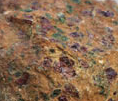 Andradite in Peridotite
Andradite in Peridotite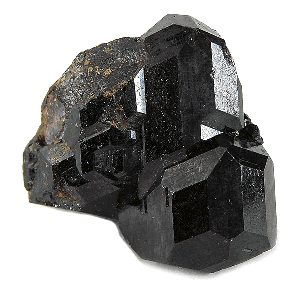 Melanite
MelaniteAndradite - Melanite
Named after Andrada de Silva, a Portugese minerologist this variety of garnet is found in red, green, brown and yellow.
When in peridotite, a dark rock, it has been described, in ‘The Complete Guide to Rocks and Minerals’ as giving:
Melanite, the black garnet, is coloured by titanium.
|Structure: Cubic|Composition: Calcium aluminium silicate|Moh's Hardness: 7|
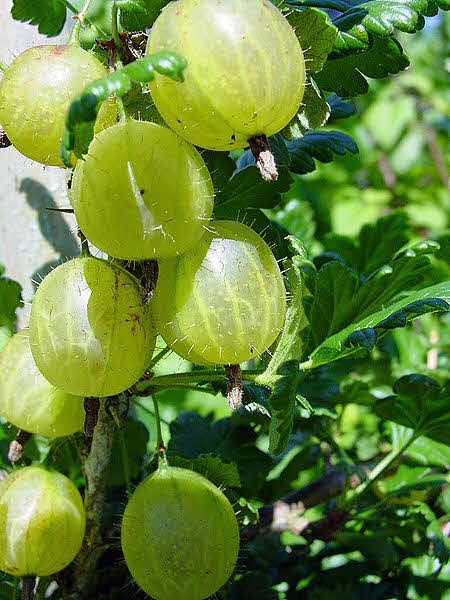 Grossular garnets get their name from the gooseberry
Grossular garnets get their name from the gooseberryRibes grossularia
Green Grossular Garnet
Green grossular garnets are commonly coloured with chromium, Tsavorite, from Tsavo in Kenya is often faceted, the opaque variety, which is often cut into beads or en cabochon is known as Transvaal or African Jade.
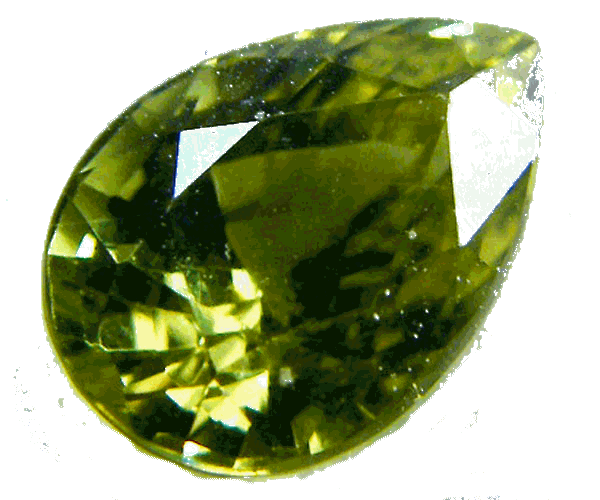 Tsavorite
Tsavorite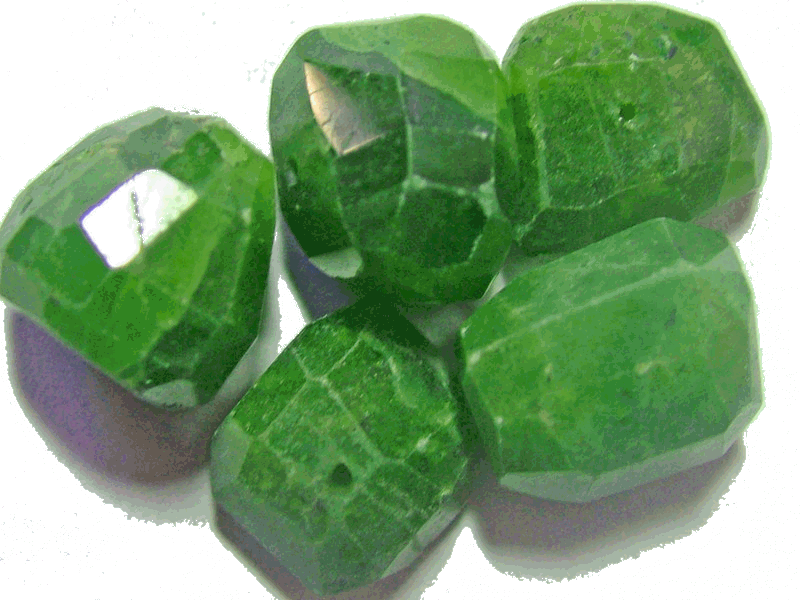
|Structure: Cubic|Composition: Calcium aluminium silicate|Moh's Hardness: 7½|
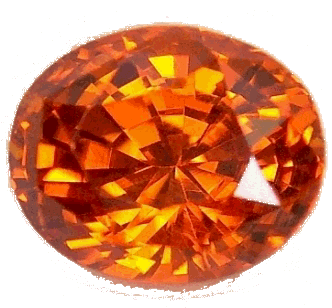
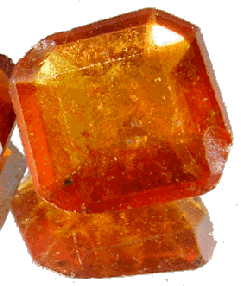
Hessonite
Hessonite is a grossular garnet, also known as Cinnamon Stone.
Hessonite is known in Sanskrit as ‘Gomeda’ and listed in the Vedic Astrology as one of the nine perfect stones.
Hessonite signifies Rahu the ascending node of the moon.
To appreciate the full power of the hessonite stone in the Vedic belief the stone has to be flawless.
|Structure: Cubic|Composition: Manganese aluminium silicate|Moh's Hardness: 7|
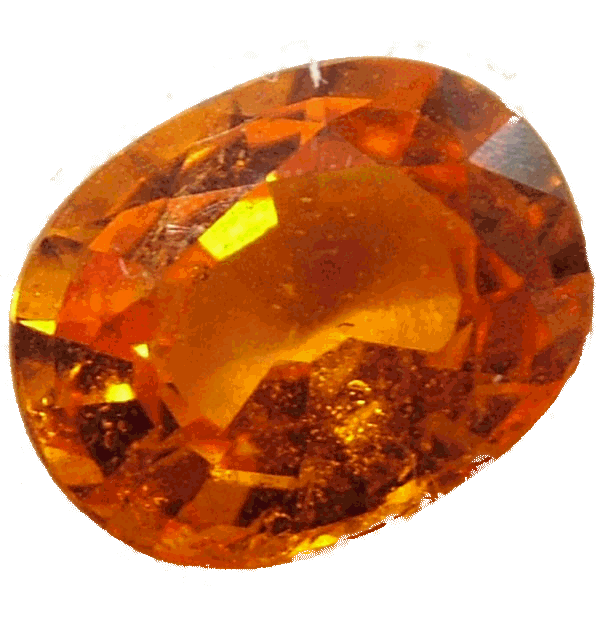
Spessartine
Named from the Spessartine area of Bavaria, the brightness of the orange colour depends on the iron content. This lovely garnet, which is sometimes confused with topaz, often contains lace like inclusions.
| Latest Trends | Ordering Information | debbie@silkpixie.com | Delivery & Returns |


